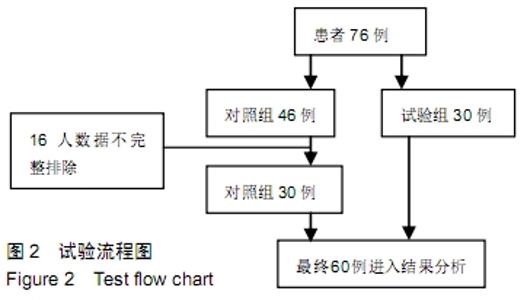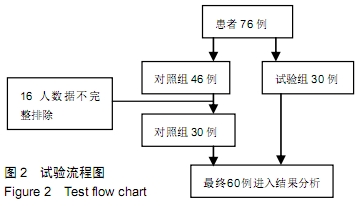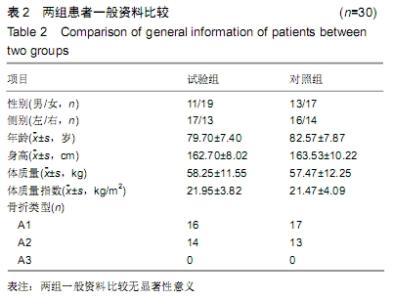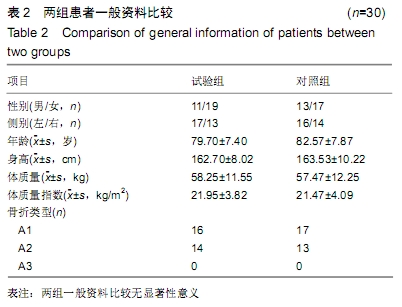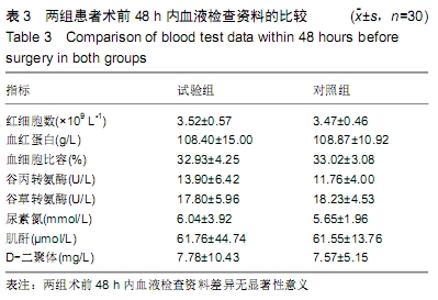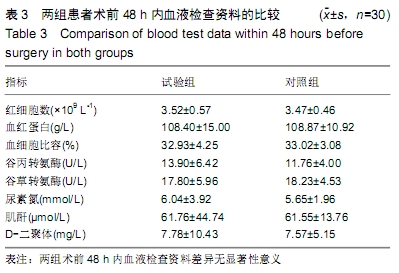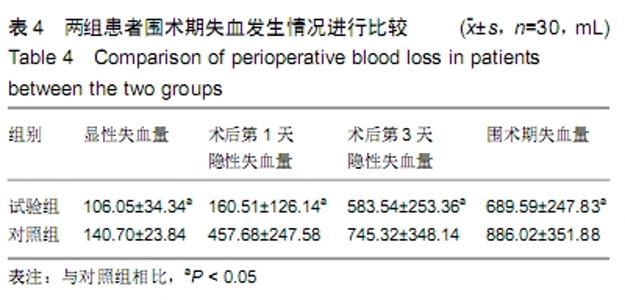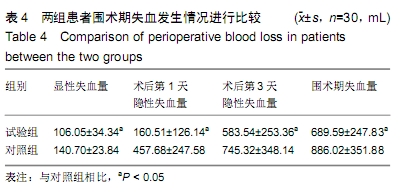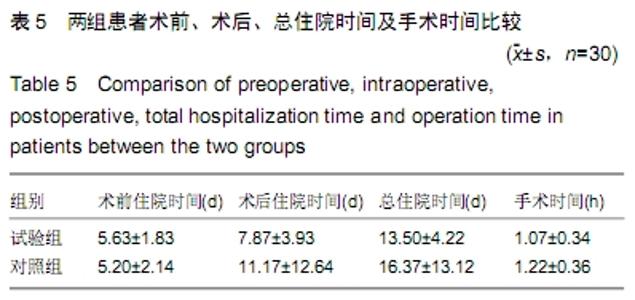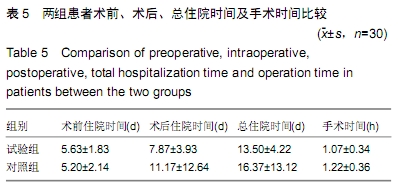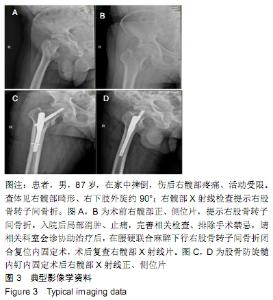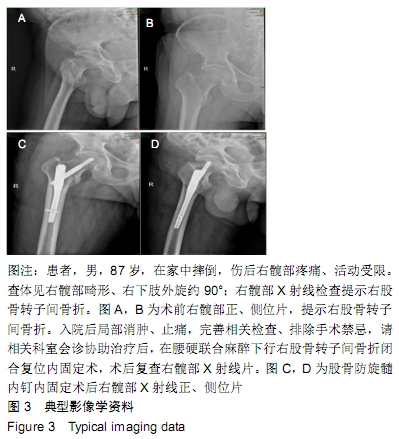[1] SCHIAVONE A, BISACCIA M, INKOV I, et al. Tranexamic acid in pertrochanteric femoral fracture: is it a safe drug or not? Folia Med (Plovdiv). 2018;60:67-78.
[2] STEVENS JA, RUDD RA. The impact of decreasing U.S. hip fracture rates on future hip fracture estimates. Osteoporos Int. 2013;24:2725-2728.
[3] WANG W, YU J. Tranexamic acid reduces blood loss in intertrochanteric fractures: a meta-analysis from randomized controlled trials. Medicine (Baltimore). 2017;96:e9396.
[4] LEI J, ZHANG B, CONG Y, et al. Tranexamic acid reduces hidden blood loss in the treatment of intertrochanteric fractures with PFNA: a single-center randomized controlled trial. J Orthop Surg Res. 2017;12:124.
[5] BHASKAR D, PARKER MJ. Haematological indices as surrogate markers of factors affecting mortality after hip fracture. Injury. 2011;42(suppl 2):178-182.
[6] SHI H, OU Y, JIANG D, et al. Tranexamic acid reduces perioperative blood loss of posterior lumbar surgery for stenosis or spondylolisthesis: a randomized trial. Medicine (Baltimore). 2017;96:e5718.
[7] SAWAGUCHI T, SAKAGOSHI D, SHIMA Y, et al. Do design adaptations of a trochanteric nail make sense for Asian patients: results of a multicenter study of the PFNA-Ⅱ in Japa. Injury. 2014;45(10):1624-1631.
[8] 张逸凌,沈景,毛智,等.股骨粗隆间骨折内固定手术隐性失血的相关因素分析[J].中国修复重建外科杂志,2014,28(5):610-614.
[9] 李海啸,石少辉,吴国平,等.扩髓及氨甲环酸局部应用对股骨转子间骨折Gamma-3固定失血的影响[J].现代医药卫生,2019,35(12): 1782-1787.
[10] GAUSDEN EB, GARNER MR, WARNER SJ, et al. Tranexamic acid in hip fracture patients: a protocol for a randomised, placebo controlled trial on the efficacy of tranexamic acid in reducing blood loss in hip fracture patients. BMJ Open. 2016;6:e010676.
[11] ZHU Q, YU C, CHEN X, et al. Efficacy and safety of tranexamic acid for blood salvage in intertrochanteric fracture surgery: a meta-analysis. Clin Appl Thromb Hemost. 2018;24:1189-1198.
[12] RODRÍGUEZ-MOYADO H. Acute lung injury as a consequence of blood transfusion. Rev Med Inst Mex Seguro Soc. 2011;49(3): 273-280.
[13] TIAN S, SHEN Z, LIU Y, et al. The effect of tranexamic acid on hidden bleeding in older intertrochanteric fracture patients treated with PFNA. Injury. 2018;49:680-684.
[14] GURNEA TP, FRYE WP. Operating room supply costs in orthopaedic trauma: cost containment opportunities. J Orthop Trauma. 2016;30 Suppl 5:S21-S26.
[15] KEHLET H. Multimodal approach to control postoperative pathophysiology and rehabilitation. Br J Anaesth. 1997;78: 606-617.
[16] MAHDY AM, WEBSTER NR. Perioperative systemic haemostatic agents. Br J Anaesth. 2004;93(6):842.
[17] YANG ZG, CHEN WP, WU LD. Effectiveness and safety of tranexamic acid in reducing blood loss in total knee arthroplasty :a meta-analysis. J Bone Joint Surg Am. 2012;94(13):1153-1159.
[18] 王浩杰,陈坚,徐志明,等.氨甲环酸辅助PFNA治疗老年不稳定性股骨转子间骨折效果分析[J].创伤外科杂志,2019,21(7):545-548.
[19] 沈鹏远,俞伟.股骨转子间骨折内固定术使用氨甲环酸的有效性和安全性[J].临床骨科杂志,2018,21(4):498-500.
[20] 王丽满,黄旭慧.利伐沙班在血栓性疾病中的应用分析[J].中国卫生标准管理,2019,10(18):89-92.
[21] 危杰.股骨转子间骨折[J].中华创伤骨科杂志,2004,6(5):554-557.
[22] NADLER SB, HIDALGO JH. Prediction of blood volume in normal human adults. Surgery. 1962;51:224-232.
[23] GROSS JB. Estimating allowable blood loss corrected for dilution. Anesthesiology 1983;58(3):277-280.
[24] FOSS NB, KEHLET H. Hidden blood loss after surgery for hip fracture. J Bone Joint Surg Br. 2006;88-B:1053-1059.
[25] SAHIN EK, IMERCI A, KINIK H, et al. Comparison of proximal femoral nail antirotation (PFNA) with AO dynamic condylar screws (DCS) for the treatment for unstable peritrochanteric femoral fractures. Eur J Orthop Surg Traumatol. 2014;24(3):347-352.
[26] JORDAN M, AGUILERA X, GONZÁLEZ JC, et al. Prevention of postoperative bleeding in hip fractures treated with prosthetic replacement: efficacy and safety of fibrin sealant and tranexamic acid. A randomised controlled clinical trial (TRANEXFER study). Arch Orthop Trauma Surg. 2019;139:597-604.
[27] 梁玉柱,郭洪刚.股骨转子间骨折179例流行病学调查:天津医科大学总医院2013至2015年就诊资料分析[J].中国组织工程研究,2018, 22(8):1167-1172.
[28] 刘璠.老年髋部骨折的特点及其治疗方法[J].中国骨与关节杂志, 2018,7(3):161-162.
[29] ZHOU XD, ZHANG Y, JIANG LF, et al. Efficacy and safety of tranexamic acid in intertrochanteric fractures: a single-blind randomized controlled trial. Orthop Surg. 2019;11:635-642.
[30] 唐佩福,姚琦,黄鹏,等.股骨近端髓内钉-螺旋刀片治疗高龄骨质疏松性股骨转子间骨折[J].中华创伤骨科杂志,2007,9(7):622-624.
[31] 韩凯伟,朱剑,唐华,等.三种髓内钉治疗股骨转子间骨折的临床研究[J].中华创伤骨科杂志,2009,11(2):103-107.
[32] SMITH GH, TSANG J, MOLYNEUX SG. The hidden blood loss after hip fracture.Injury 2011;42:133-135.
[33] SEHAT KR, EVANS RL. Hidden blood loss following hip and knee arthroplasty. Correct management of blood loss should take hidden loss into account. J Bone Joint Surg Br. 2004;86:561-565.
[34] 史庆轩,胡宏伟,宁廷民,等.PFNA治疗高龄股骨粗隆间骨折隐性失血的发生机制及影响因素初步分析[J].中国矫形外科杂志,2014,22(14): 1262-1265.
[35] LUO X, HE S, LIN Z, et al. Efficacy and safety of tranexamic acid for controlling bleeding during surgical treatment of intertrochanteric fragility fracture with proximal femoral nail anti-rotation: a randomized controlled trial. Indian J Orthop. 2019;53:263-269.
[36] 张久之,万献尧.创伤性出血与凝血功能障碍处理-2013年欧洲指南解读[J].创伤与急危重病医学,2014,2(5):257-261.
[37] 张斌,蒋守银,江利冰,等.创伤后大出血与凝血病处理的欧洲指南(第5版)[J].中华急诊医学杂志,2019,28(4):429-431.
[38] ZHANG P, HE J, FANG Y, et al. Efficacy and safety of intravenous tranexamic acid administration in patients undergoing hip fracture surgery for hemostasis: a meta-analysis. Medicine (BaltiMore). 2017;96:e6940.
[39] BARUAH RK, BORAH PJ. Use of tranexamic acid in dynamic hip screw plate fixation for trochanteric fractures. J Orthop Surg (Hong Kong). 2016;24:379-382.
[40] FARROW LS, SMITH TO, ASHCROFT GP. A systematic review of tranexamic acid in hip fracture surgery. Br J Clin Pharmacol. 2016;82:1458-1470.
[41] KELLEY TC, TUCKER KK, ADAMS MJ, et al. Use of tranexamic acid results in decreased blood loss and decreased transfusions in patients undergoing staged bilateral total knee arthroplasty. Transfusion. 2014;54(1):26-30.
[42] 张忠岩,李玉波,常韬,等.氨甲环酸对老年不稳定型转子间骨折行PFNA内固定围术期失血量及安全性研究[J].中国骨与关节杂志, 2019,8(3):225-228.
[43] 赵紫楠,孙雪林,胡欣.直接口服抗凝药预防骨科大手术后静脉血栓栓塞症疗效与安全性的系统评价[J].中国循证医学杂志,2019,19(10): 1217-1225.
[44] DRAKOS A, RAOULIS V, KARATZIOS K, et al. Efficacy of local administration of tranexamic acid for blood salvage in patients undergoing intertrochanteric fracture surgery. J Orthop Trauma. 2016;30:409-414.
[45] MOHIB Y, RASHID RH, ALI M, et al. Does tranexamic acid reduce blood transfusion following surgery for inter-trochanteric fracture? A randomized control trial. J Pak Med Assoc. 2015;65:S17-S20.
[46] TIAN SW, LI H, PENG AQ, et al. Dynamic analysis of perioperative hidden blood loss in intertrochanteric fractures. Clin Appl Thromb Hemost. 2019. doi: 10.1177/1076029618823279.
[47] 朱先任,郑欣,李东亚,等.重复静脉应用氨甲环酸对腰椎手术失血量的影响[J].中国矫形外科杂志,2019,27(15):1375-1379.
|
